The Banana-Peeling Pachyderm: Elephant’s Got Talent

Move over, humans – there’s a new fruit connoisseur in town! Pha, an Asian elephant at the Berlin Zoo, has mastered the art of peeling bananas. But here’s the kicker: she only peels the ripe ones with brown spots. Smithsonian Magazine reports that this picky pachyderm has developed a sophisticated palate, carefully selecting and peeling her bananas before eating. Apparently, she’s not just an elephant; she’s a banana snob! It’s like she’s running her own Michelin-starred restaurant in there. What’s next? Elephants making cappuccinos?
As if that weren’t impressive enough, BBC Wildlife reveals that Pha has also figured out how to open locked gates, much to the zookeepers’ chagrin. It’s as if she’s auditioning for “Ocean’s Fourteen: Pachyderm’s Paradise.” One day she’s peeling bananas, the next she’s planning a grand escape with her trunk-wielding gang. The zookeepers are probably losing sleep wondering what she’ll learn next. Will she start filing her own tax returns? Ordering takeout? At this rate, we might need to start elephant-proofing our Wi-Fi passwords!
The Crocodile Crossing Guard: Scaley Samaritans

In a plot twist worthy of a Disney movie, the Wildlife Conservation Society reports that some mugger crocodiles were spotted helping a young dog to safety after it was chased into a river. It’s like they suddenly remembered they were in a Pixar film and not a National Geographic documentary. Maybe they were just saving the pup for a snack later, or perhaps they’re auditioning for the role of “Misunderstood Reptile” in the next animated blockbuster.
But the croc’s crossing guard duties don’t stop there! The Crocodile Specialist Group has observed these scaly samaritans giving free rides to birds and turtles across rivers. It’s like they’re running an underwater Uber service, except the payment is in clout rather than cash. Scientists are baffled by this behavior, wondering if the crocs are just lazy and using smaller animals as mobile back-scratchers, or if they’re trying to improve their public image. Either way, it’s clear that these reptiles are rewriting the rules of the food chain. Who knew that “See you later, alligator” could turn into “Thanks for the lift, crocodile!”?
The Horned Lizard’s Bloody Defense: Ocular Squirt Gun
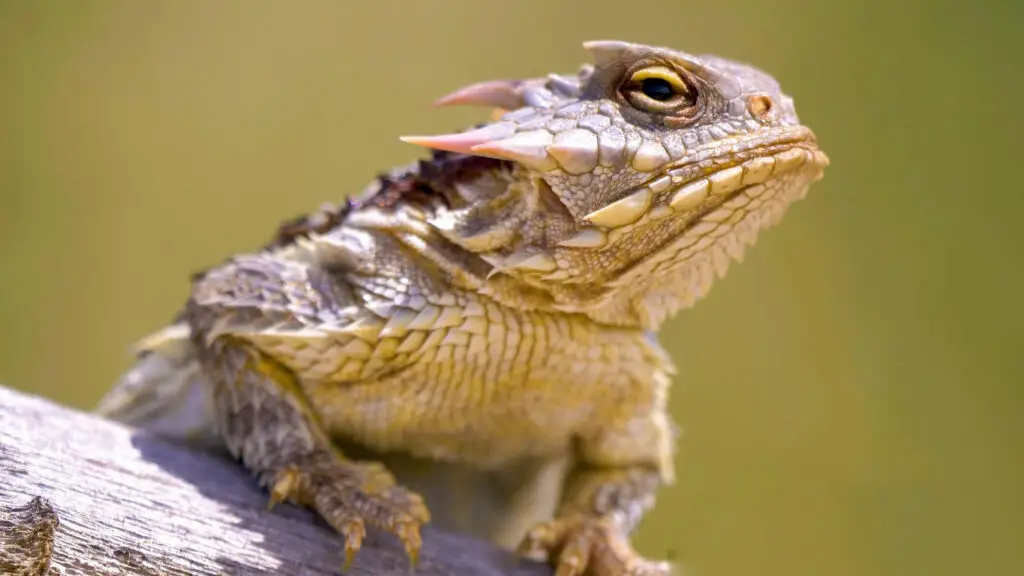
If you thought spitting contests were gross, wait until you hear about the horned lizard‘s defense mechanism. When threatened, this little reptile doesn’t just play dead or run away. Oh no, it goes for the gore factor. According to research published in the Journal of Experimental Biology, the horned lizard can actually shoot blood from its eyes! By increasing the blood pressure in its head, the lizard can rupture tiny blood vessels around its eyelids, creating a spray of blood that can travel up to five feet. It’s like a tiny, scaly Quentin Tarantino film!
But here’s the kicker: Dr. Wade Sherbrooke of the Southwestern Research Station found that this bloody defense not only startles predators but also tastes foul to canines and felines. Talk about an eye-popping party trick! It’s like the lizard’s saying, “You want a piece of me? Here, have a face full of my blood!” Who needs pepper spray when you can just hurl your own bodily fluids at your attacker?
The Lyrebird: Nature’s Greatest Impersonator
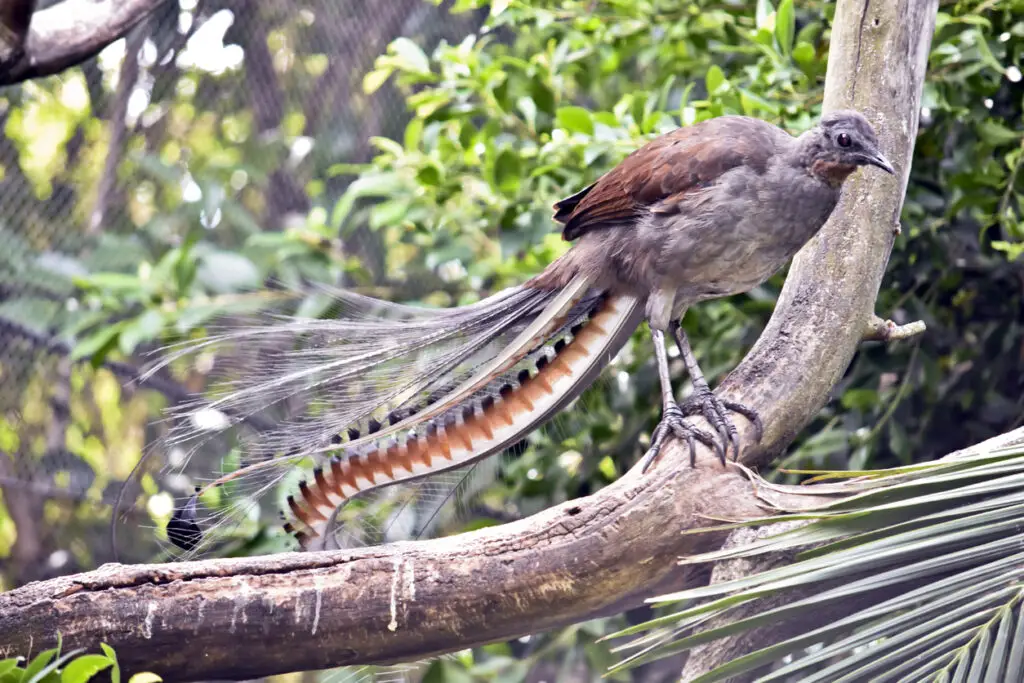
Move over, Jimmy Fallon! The lyrebird is the true master of impressions in the animal kingdom. This Australian avian virtuoso can mimic an astounding array of sounds, from other bird calls to car alarms, chainsaws, and even human speech. David Attenborough, in his BBC documentary “The Life of Birds,” captured a lyrebird perfectly recreating the sounds of camera shutters, car alarms, and even a chainsaw!
But here’s the kicker: male lyrebirds use these impersonations as part of their mating display. Imagine trying to woo your date by perfectly recreating the sound of a construction site. It’s like a feathered version of “America’s Got Talent,” where the grand prize is… well, making more lyrebirds. Dr. Anastasia Dalziell of the Cornell Lab of Ornithology suggests that the more complex and accurate the mimicry, the more attractive the male is to potential mates. Who knew that in the bird world, the best pick-up line might be the sound of a jackhammer?
The Kangaroo Lifeguard: Not the Hero We Wanted

Picture this: You’re a dog enjoying a nice swim in the Murray River when suddenly, a buff kangaroo decides it’s time for your swimming session to end – permanently. That’s right, these hoppy hooligans have been caught trying to drown dogs, probably because they’re tired of being chased by them on land. It’s like they’re saying, “G’day mate, time for your final doggy paddle!” Talk about taking the phrase “dog eat dog world” to a whole new level!
But wait, there’s more to this marsupial madness! Scientists believe this bizarre behavior might be a twisted form of self-defense. According to Live Science, when a kangaroo feels threatened, it hops to the nearest body of water and waits for its pursuer to follow. Then, using its powerful arms, it attempts to hold the unfortunate creature underwater. It’s like they’ve been binge-watching too many WWE wrestling matches and decided to try out some new moves. So the next time you see a kangaroo by the water, remember: that’s not a lifeguard station, it’s a trap!
The Octopus Escape Artist: Eight-Armed Houdini
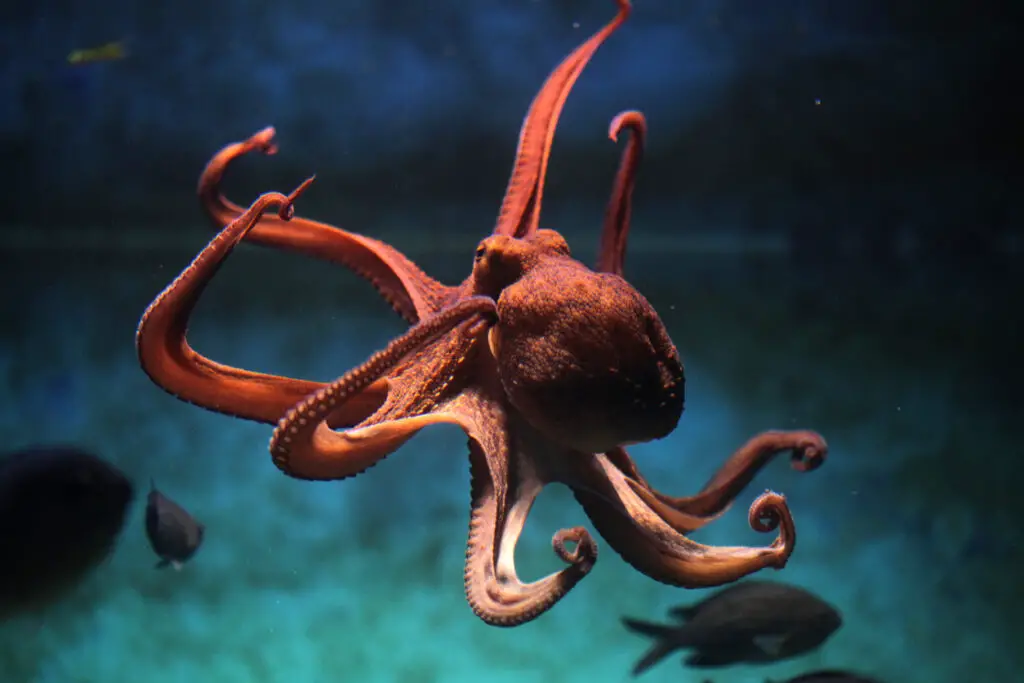
Move over, David Blaine – there’s a new escape artist in town, and it’s got eight arms! Inky, a common New Zealand octopus, made headlines when it pulled off a daring aquarium escape that would make Andy Dufresne proud. According to National Geographic, this crafty cephalopod squeezed through a tiny gap in its tank, slithered across the floor, and shimmied down a 50-meter drainpipe to freedom in the ocean. It’s like “The Shawshank Redemption” meets “Finding Nemo,” with a splash of “Mission: Impossible” thrown in for good measure.
But here’s the kicker: octopuses are known for their Houdini-like abilities. Dr. Jennifer Mather, a cephalopod expert at the University of Lethbridge, reports that these eight-armed escape artists can squeeze through any opening larger than their beak – the only hard part of their body. It’s as if they’re made of living Play-Doh! One has to wonder: are our aquariums just octopus prisons, and we’re all unwitting wardens in their elaborate escape plans?
The Platypus: Nature’s Frankenstein
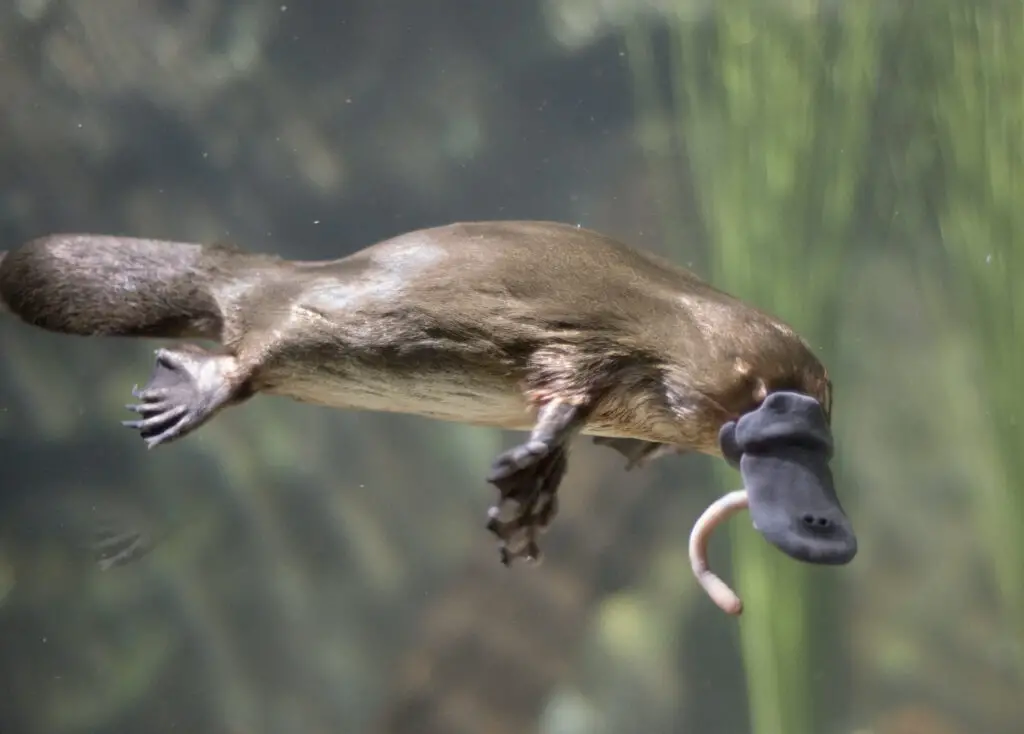
Just when you thought the platypus couldn’t get any weirder, scientists have discovered that these duck-billed, beaver-tailed, otter-footed mammals can also see in the dark – with their eyes closed! According to research published in Nature, platypuses have electroreceptors in their bills that allow them to detect electrical signals from their prey. It’s like they’re walking around with built-in night vision goggles and metal detectors!
But wait, there’s more! The Journal of Mammalogy reports that male platypuses have venomous spurs on their hind legs. That’s right, they’re part duck, part beaver, part otter, and part snake. It’s as if Mother Nature had a few too many cocktails and decided to play a game of “Animal Mash-up.” What’s next? Will we discover they can breathe fire or shoot lasers from their eyes? At this point, nothing would surprise us about these living, breathing cryptids!
The Immortal Jellyfish: Benjamin Button of the Sea
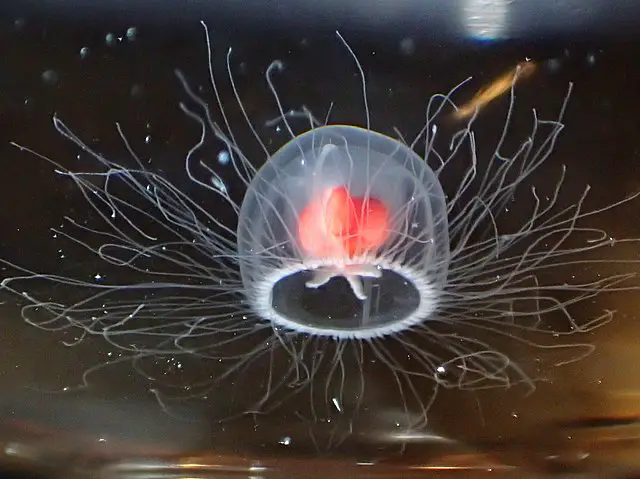
Forget face creams and plastic surgery – the key to eternal youth might be floating around in our oceans! The immortal jellyfish, or Turritopsis dohrnii, has the extraordinary ability to revert back to its juvenile stage after reaching maturity. According to research published in Biological Bulletin, when faced with environmental stress or physical damage, this jellyfish can transform its mature cells back into immature ones, essentially hitting the reset button on its life cycle. It’s like they’ve found the fountain of youth and are doing backstroke laps in it!
Marine biologist Shin Kubota from Kyoto University has kept some of these jellies alive for over two years through repeated rejuvenation. It’s as if these cnidarians are playing a real-life game of “Groundhog Day,” but instead of reliving the same day, they’re reliving their entire life cycle. One has to wonder: do these jellies get bored of puberty after the hundredth time around?
The Tardigrade: Microscopic Superhero
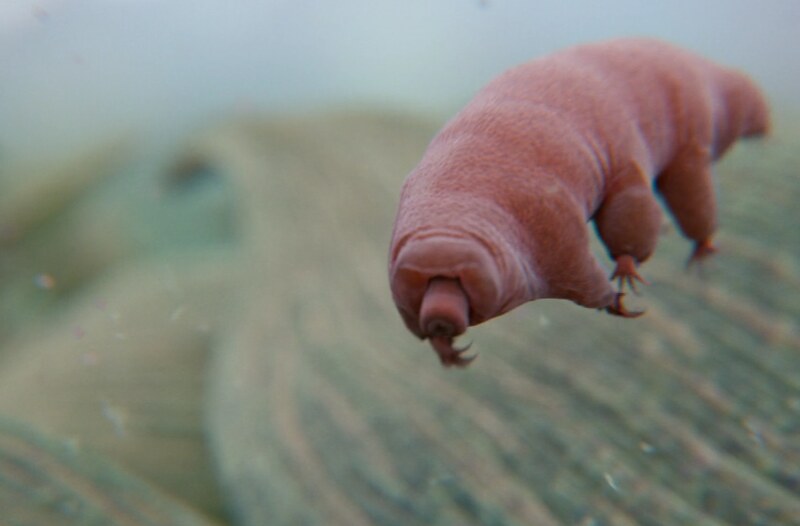
Move over, Superman – there’s a new indestructible hero in town, and it’s microscopic! Tardigrades, also known as water bears or moss piglets, are tiny creatures that can survive just about anything. According to research published in Scientific Reports, these micro-animals can withstand extreme temperatures, radiation, and even the vacuum of space. It’s like they’re auditioning for a role in “The Avengers,” but they’re too small for anyone to notice!
But here’s the kicker: tardigrades can also survive without water for up to 30 years by entering a state of cryptobiosis, essentially becoming a living fossil. Dr. Thomas Boothby from the University of Wyoming discovered that they do this by replacing water in their bodies with a special sugar called trehalose. It’s as if they’re preserving themselves like tiny, living gummy bears! One has to wonder: if we ever face a global apocalypse, will tardigrades be the only survivors, inheriting a planet they’re too small to enjoy?
The Axolotl: The Real-Life Wolverine
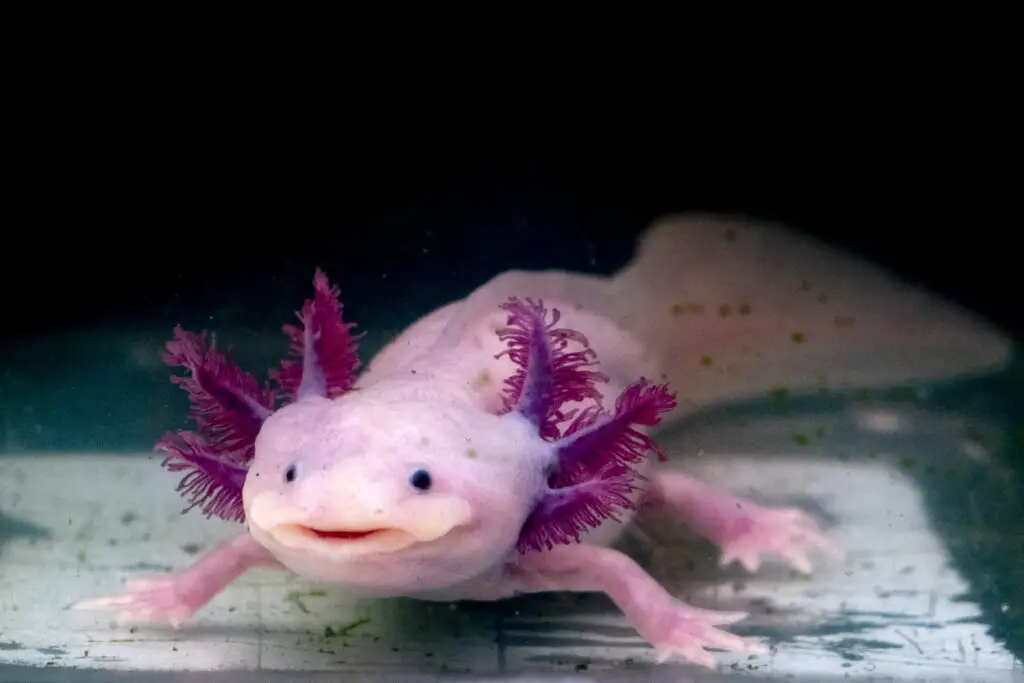
Who needs fictional superheroes when we have the axolotl? This Mexican salamander, also known as the “walking fish,” has regenerative powers that would make Wolverine green with envy. According to research published in Nature, axolotls can regrow not just limbs, but also parts of their brain, spinal cord, and even heart! It’s like they’re living, breathing 3D printers, constantly ready to hit the “restore factory settings” button.
But wait, there’s more! Dr. Elly Tanaka from the Research Institute of Molecular Pathology in Vienna discovered that axolotls can even accept organs from other axolotls without rejection. It’s as if they’re running their own black market for body parts, but everything’s above board and DIY. One has to wonder: if we could harness this power, would we still need health insurance, or would we just keep a pet axolotl for spare parts?
The Pistol Shrimp: Underwater Gunslinger
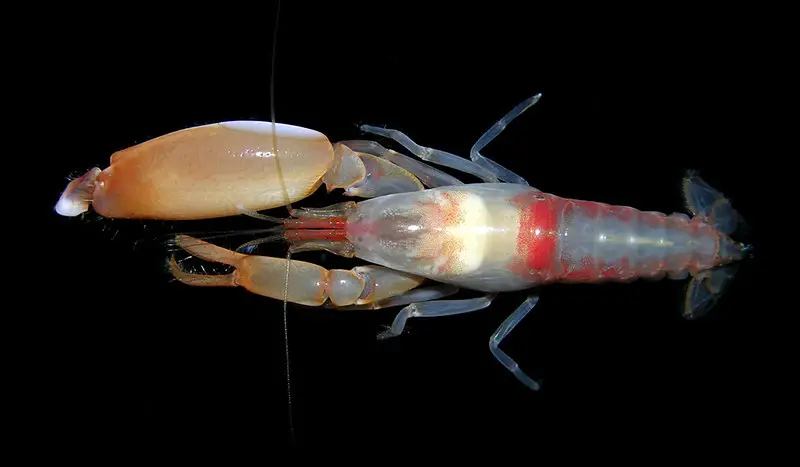
In the underwater Wild West, the pistol shrimp is the fastest draw in town. This tiny crustacean packs a punch – or rather, a snap – that would make any cowboy jealous. According to research published in Science, when the pistol shrimp snaps its oversized claw shut, it creates a cavitation bubble that collapses with such force it produces a sound louder than a gunshot and temperatures nearly as hot as the sun’s surface. It’s like they’re carrying around their own personal supernova!
Marine biologist Sheila Patek from Duke University found that this snap happens so fast, it actually creates a flash of light. It’s as if these shrimp are trying to start their own underwater rave party! One has to wonder: do other sea creatures wear earplugs to bed, or have they all gone deaf from living next door to these noisy neighbors?
The Peacock Mantis Shrimp: Technicolor Terminator
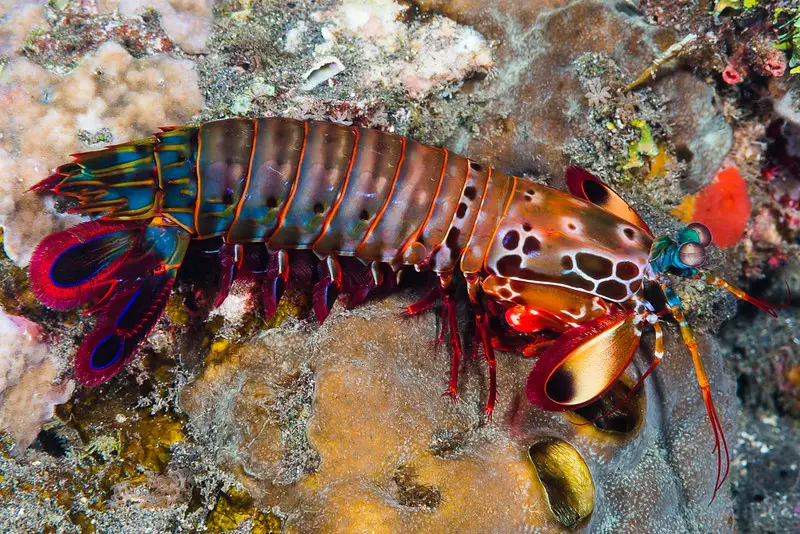
If you thought the pistol shrimp was impressive, wait until you meet its flamboyant cousin, the peacock mantis shrimp. This psychedelic crustacean is not only a walking rainbow but also packs a punch that would make Mike Tyson jealous. According to research published in Current Biology, the mantis shrimp’s strike is so fast it boils the water around it, creating a shockwave that can stun or kill its prey. It’s like they’re carrying around their own personal Thor’s hammer!
But here’s the real mind-bender: Dr. Justin Marshall from the University of Queensland discovered that these shrimp have the most complex eyes in the animal kingdom, with 16 color receptors (compared to our measly three). They can see a type of light called circular polarization that no other animal can detect. It’s as if they’re living in a perpetual acid trip, seeing colors we can’t even imagine. One has to wonder: do they think the rest of us are living in a black and white movie?
The Greenland Shark: The Methuselah of the Deep
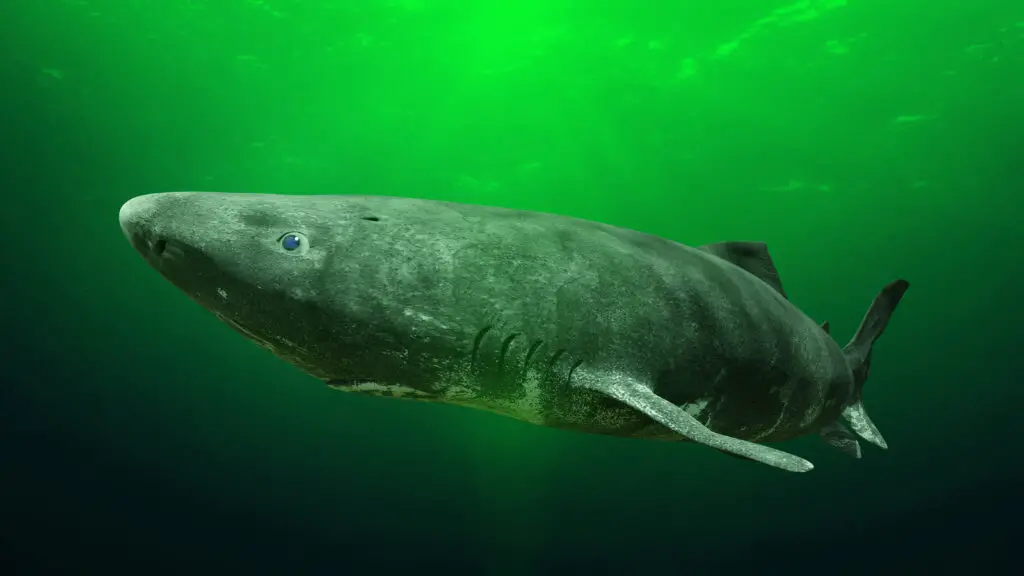
Forget tortoises – if you want to talk about longevity, look no further than the Greenland shark. These deep-sea dwellers make Galapagos tortoises look like mayflies in comparison. According to research published in Science, Greenland sharks can live for up to 500 years, making them the longest-living vertebrates known to science. It’s like they’ve found the fountain of youth at the bottom of the ocean and are keeping it all to themselves!
Marine biologist Julius Nielsen from the University of Copenhagen used radiocarbon dating to determine the age of these sharks and found that they don’t even reach sexual maturity until around 150 years old. It’s as if their entire life is one long, slow-motion teenage phase. One has to wonder: do these sharks get senior discounts at 400, or are they still considered middle-aged?
The Hagfish Slime Machine: Living Snot Factory
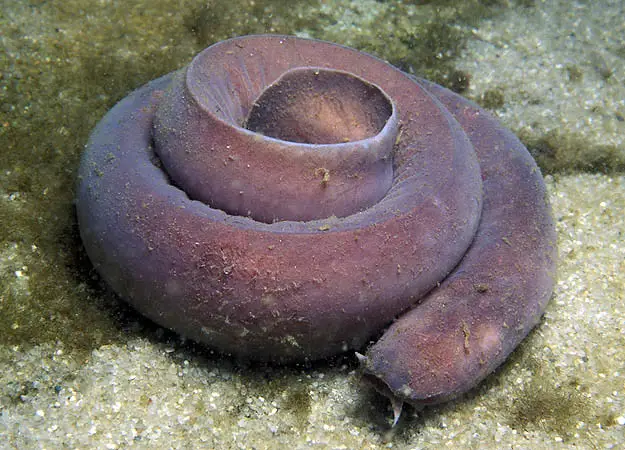
The hagfish might look like an unremarkable eel-like creature, but don’t be fooled. This deep-sea dweller has a superpower that would make even Spiderman jealous. When threatened, the hagfish can produce copious amounts of slime – up to 5 gallons in minutes! Dr. Douglas Fudge of Chapman University, who’s spent years studying these slimy creatures, reports that this goo is so effective it can clog the gills of would-be predators, allowing the hagfish to slip away.
It’s like carrying around a personal supply of ultra-strength snot. But wait, there’s more! The Journal of Experimental Biology reveals that scientists are even studying this miracle mucus for potential applications in creating sustainable fabrics. Who knew boogers could be so versatile? Next time someone calls you a slimeball, just remember – you could be the next big thing in eco-friendly fashion! Imagine a world where your clothes are made from hagfish slime. Talk about a conversation starter at parties! “Oh, this old thing? It’s just my favorite hagfish-mucus sweater.”
The Sloth’s Slow-Motion Spa Day

Sloths take laziness to a whole new level. These slow-moving mammals only poop once a week, and when they do, it’s an event. They climb down from their treetop homes, dig a hole, do their business, and cover it up – all at a pace that would make a snail look like Usain Bolt. It’s like they’re treating their weekly bathroom break as a spa day. One has to wonder: do they bring a magazine to read, or is the journey itself entertainment enough?
But there’s more to this weekly ritual than meets the eye. According to research published in the Proceedings of the Royal Society B, this risky behavior is crucial for the sloth’s ecosystem. As they descend, they deposit moths that live in their fur onto the forest floor. These moths then lay eggs in the sloth’s dung, which eventually decompose and fertilize the trees that sloths feed on. It’s a bizarre circle of life that would make even David Attenborough scratch his head. Dr. Jonathan Pauli from the University of Wisconsin-Madison suggests that this symbiotic relationship is so important that sloths risk predation just to maintain it. Talk about taking one for the team!
The Vampire Squid: Deep-Sea Dracula

Move over, Count Dracula – there’s a new vampire in town, and it lives in the deep sea! The vampire squid, scientifically known as Vampyroteuthis infernalis, is a cephalopod that looks like it came straight out of a horror movie. Despite its name, this creature doesn’t actually suck blood. Instead, it uses its eight arms and two filaments to catch marine snow – tiny bits of decaying organic material that float down from the surface.
But here’s the kicker: when threatened, the vampire squid can turn itself inside out, revealing a mass of spike-like cirri that make it look like a spiky pincushion. It’s like nature’s version of a reversible jacket, except way more terrifying! Scientists from the Monterey Bay Aquarium Research Institute have observed this bizarre defense mechanism in action, proving that sometimes, the best offense is a good defense – especially when that defense involves looking like a nightmare come to life.
The Olinguito: Hide-and-Seek Champion

Imagine playing a game of hide-and-seek that lasts for nearly a century. That’s essentially what happened with the olinguito, a raccoon-like mammal that managed to elude scientific discovery until 2013. This adorable ball of fluff had been hiding in plain sight in the cloud forests of Ecuador and Colombia, probably giggling to itself as confused scientists scratched their heads.
The Smithsonian Institution reports that olinguito specimens had actually been sitting in museum collections for years, mislabeled as their close relatives, olingos. It’s like finding out your cat is actually a miniature lion – surprising, but also kind of awesome. The olinguito is the first new carnivorous mammal species identified in the Americas in 35 years, proving that even in the 21st century, Mother Nature still has a few tricks up her sleeve. Who knows what other furry surprises might be lurking in our museums, waiting for their moment in the spotlight?
I apologize for the duplicates. Let me provide you with some fresh, unique animal discoveries:
The Ninja Lanternshark: Glowing Assassin of the Deep
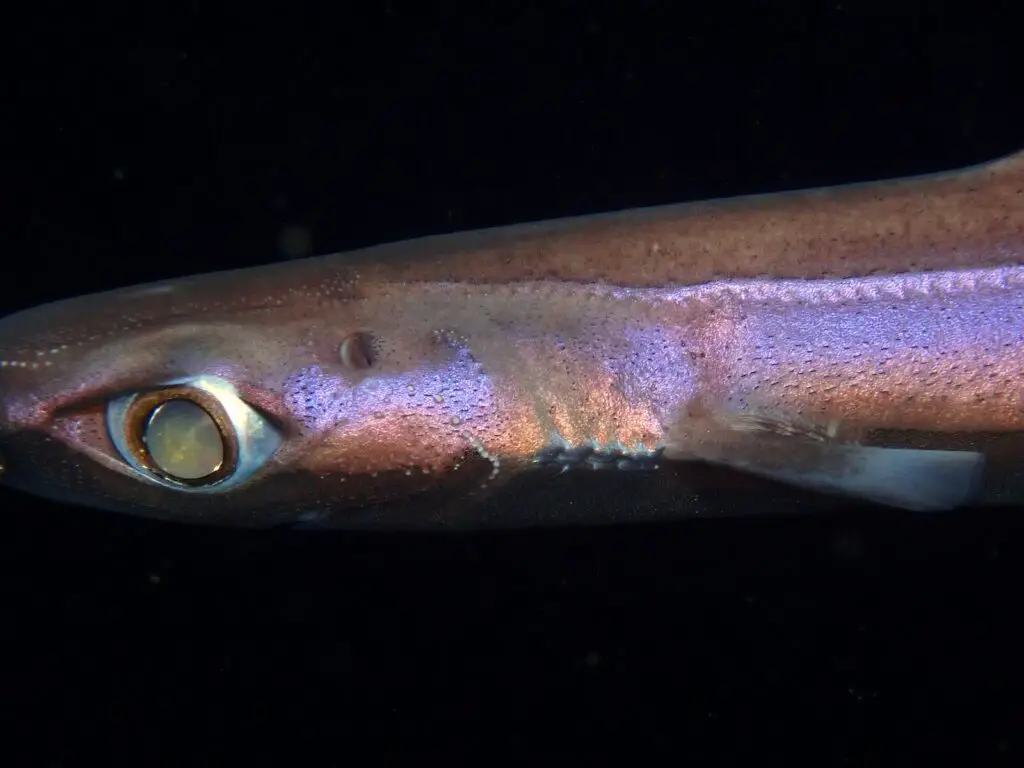
Just when you thought the ocean couldn’t get any cooler, scientists discovered a shark that glows in the dark. The ninja lanternshark, scientifically known as Etmopterus benchleyi, was found lurking in the deep waters off the coast of Central America. According to research published in the Journal of the Ocean Science Foundation, this pint-sized predator (growing to only about 50 cm long) uses its bioluminescence not to attract prey, but to blend in with the faint light from above, becoming invisible to prey swimming beneath it.
It’s like nature decided to combine a ninja’s stealth with a shark’s predatory skills and threw in some glow sticks for good measure. Dr. Vicky Vásquez, who helped discover the species, notes that the shark’s unique camouflage strategy is a testament to the incredible adaptations found in deep-sea creatures. One has to wonder: if we had ninja lanternsharks at raves, would they be the life of the party or the ultimate party crashers?
The Skeleton Panda Sea Squirt: Gothic Chic of the Ocean
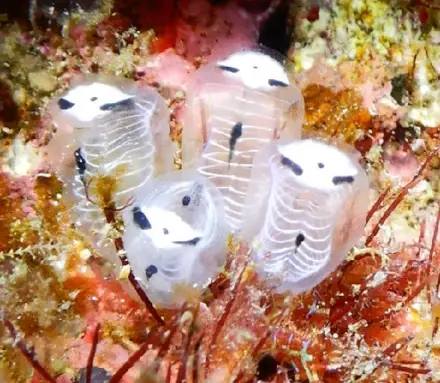
In the depths of the ocean, fashion takes a decidedly gothic turn with the skeleton panda sea squirt. This bizarre creature, scientifically known as Pseudodiazona harbanssingh, looks like someone dressed up a panda skeleton for Halloween and then decided to go for a swim. Discovered in the deep waters off Taiwan, this sea squirt has a translucent body with dark ‘bones’ visible through its skin, giving it an eerie, skeletal appearance.
Marine biologist Dr. Mao-Ying Lee, who first described the species in the journal Zootaxa, was struck by its unique appearance. It’s as if Mother Nature decided to create her own version of a Tim Burton character, but underwater. One has to wonder: do these sea squirts celebrate Día de los Muertos all year round? While its spooky appearance might seem like a disadvantage, scientists believe it might actually help the creature blend in with the dark waters of its deep-sea home, proving that sometimes, being gothic can be a survival strategy.
The Blob Fish: Misunderstood Meme Star
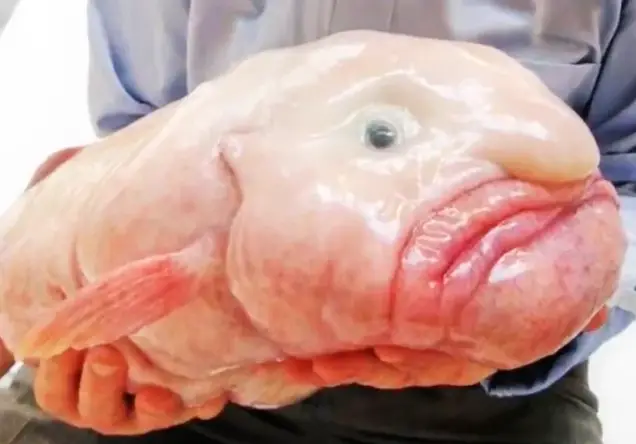
Meet the blobfish, once voted the world’s ugliest animal and the unintentional star of countless internet memes. But here’s the twist: the blobfish isn’t actually as blob-like as we think. According to marine biologist Professor Rikke Øgelund from the University of Copenhagen, the blobfish’s famously gloopy appearance is actually the result of decompression damage when it’s brought to the surface from its deep-sea home.
In its natural habitat, up to a kilometer below the ocean surface, the blobfish looks like a fairly normal fish. The intense pressure at those depths gives it its shape. It’s only when brought to the surface that it turns into the sad, melty face we all know and love (or love to hate). It’s like the ultimate bad hair day, but for your entire body. The blobfish’s plight serves as a reminder that beauty is not only in the eye of the beholder but also heavily dependent on atmospheric pressure. Maybe we should start a #BlobfishBeauty movement?
The Pinocchio Frog: Nose-Growing Amphibian
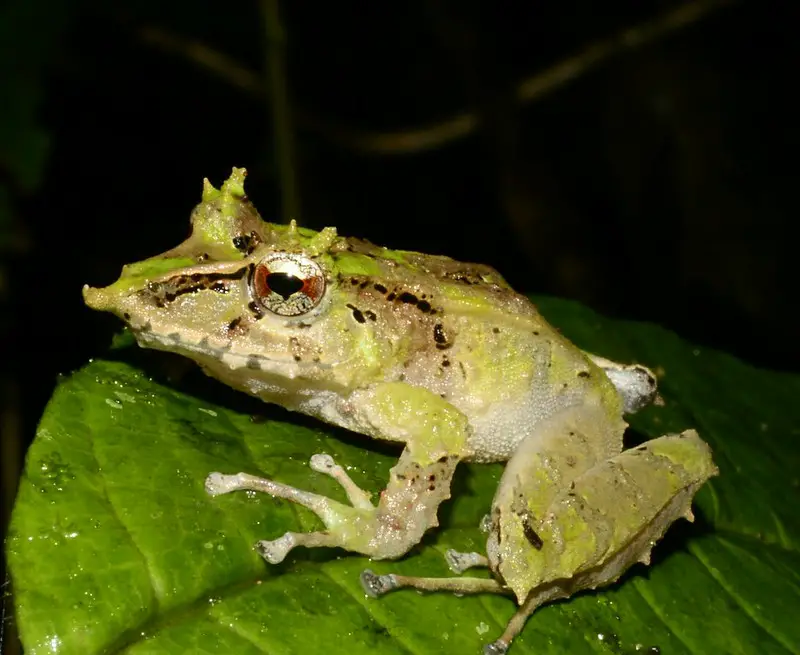
In a twist that would make Carlo Collodi proud, scientists discovered a frog species in Indonesia that looks like it’s been telling a few too many lies. The aptly named Pinocchio frog, or Litoria pinocchio, sports a long, fleshy protuberance on its nose that can be inflated at will. It’s as if this little amphibian is auditioning for a role in a fairy tale!
Herpetologists aren’t quite sure what the nose is for, but they suspect it might have something to do with mating calls or species recognition. Imagine trying to impress your date by inflating your nose – it’s not exactly smooth, but hey, whatever works in the frog world! This discovery, reported in the Proceedings of the Royal Society B, just goes to show that truth is often stranger than fiction, especially when it comes to the weird and wonderful world of animals.


